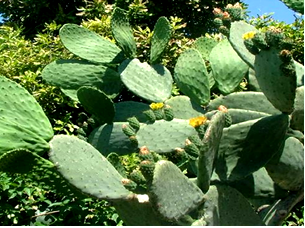A REVIEW: OPUNTIA FICUS-INDICA AS A SOURCE OF BIOACTIVE COMPOUND INGREDIENTS FOR FUNCTIONAL FOODS, NUTRITION, HUMAN DISEASE AND HEALTH
Keywords:
Biological and functional activities, Opuntia ficus-indica (L.) Mill., pharmaceutical fields, phytochemicals, prickly pearAbstract
Originally from Mexico, today, prickly pears (Opuntia ficus-indica (L.) Mill.) can be found worldwide, but they are most common in Africa., Australia, and the countries of the Mediterranean. The Cactaceae family, which has more than 1500 species of cactus, includes prickly pears. Additionally, consumers are becoming more and more interested in it because it contains bioactive substances like carotenoids, sterols, polyunsaturated fatty acids, polyphenols, and vitamins that are linked to important biological and functional activities such as effects on antioxidants, inflammation, and hypoglycemia as it prospers in dry and semiarid areas, this plant is very effective in preventing desertification and can be exploited in fields and gardens as a fence. Although it is frequently used today to make culinary products like jams and juices, it is also eaten as a fruit. If one wishes to create novel products with health-promoting properties for food, cosmetics, or pharmaceutical fields, as a feasible wellspring of phytochemicals for practical food sources, natural additions, or nutritional supplements, prickly pears are affordable.

Peer Review History:
Received 3 December 2023; Revised 25 January 2024; Accepted 6 March; Available online 15 March 2024
Academic Editor: Dr. Sally A. El-Zahaby , Pharos University in Alexandria, Egypt, sally.elzahaby@yahoo.com
, Pharos University in Alexandria, Egypt, sally.elzahaby@yahoo.com
Reviewers:
 Dr. Gehan Fawzy Abdel Raoof Kandeel, Pharmacognosy Department, National Research Centre, Dokki, 12622, Giza, Egypt, gehankandeel9@yahoo.com
Dr. Gehan Fawzy Abdel Raoof Kandeel, Pharmacognosy Department, National Research Centre, Dokki, 12622, Giza, Egypt, gehankandeel9@yahoo.com
 Dr. Evren Alğin Yapar, Turkish Medicines and Medical Devices Agency, Turkiye, evren.yapar@yahoo.com
Dr. Evren Alğin Yapar, Turkish Medicines and Medical Devices Agency, Turkiye, evren.yapar@yahoo.com
Downloads

Published
How to Cite
Issue
Section

This work is licensed under a Creative Commons Attribution-NonCommercial 4.0 International License.









 .
.